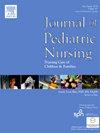埃塞俄比亚西南部儿科急诊科住院时间延长的患病率和相关因素:一项横断面研究
IF 2.3
4区 医学
Q2 NURSING
Journal of Pediatric Nursing-Nursing Care of Children & Families
Pub Date : 2025-10-09
DOI:10.1016/j.pedn.2025.10.001
引用次数: 0
摘要
背景:在儿科急诊科长时间住院会对患者的预后产生负面影响,并增加院内感染、发病率和死亡率的风险。关于埃塞俄比亚儿科急诊科住院时间的信息有限。因此,本研究旨在评估到吉马医疗中心急诊科就诊的儿科患者的患病率及其与住院时间相关的因素。方法采用系统随机抽样的方法,选取464名被试进行横断面研究。数据输入Epidata 4.6版本,导出到SPSS 26.0版本进行分析。双变量和多变量逻辑回归用于识别与住院时间相关的因素,其显著性水平为95%的置信区间。结果延长住院率为61.90% (95% CI: 57.5 ~ 66.4)。分类为红色(AOR, 2.67; 95% CI, 1.37-5.22)和黄色(AOR, 3.91; 95% CI, 2.25-6.77)、夜间到达的患者(AOR, 2.32; 95% CI, 1.08-5.01)、没有医疗保险的患者(AOR, 1.92; 95% CI, 1.18-3.13)、没有从医院药房获得所有处方药的患者(AOR, 4.17; 95% CI, 2.49-6.95)和既往存在合共病的患者(AOR, 2.05; 95% CI, 1.12-3.78)与儿科急诊科的住院时间延长有显著关联。结论大多数患儿在江淮医院儿科急诊科的住院时间较长。这与红色或黄色分类、没有健康保险、晚上到达、先前存在的合并症、要求影像学检查以及没有从医院药房获得所有处方药密切相关。本文章由计算机程序翻译,如有差异,请以英文原文为准。
Prevalence and factors associated with prolonged length of stay at pediatric emergency department, Southwest Ethiopia: A cross-sectional study
Background
Prolonged stay in the pediatric emergency department negatively affects patient outcomes and increases the risk of nosocomial infections, morbidity, and mortality. There is limited information on the length of stay in pediatric emergency departments in Ethiopia. Therefore, this study aimed to assess the prevalence and factors associated with length of stay among pediatric patients who visited the emergency department of Jimma Medical Center (JMC).
Methods
An institution-based cross-sectional study with 464 participants selected through systematic random sampling. Data were entered into Epidata version 4.6 and exported to SPSS version 26.0 for analysis. Bivariate and multivariate logistic regression were used to identify factors associated with length of stay at a significance level with a 95 % confidence interval.
Results
The extent of prolonged stay was 61.90 % (95 % CI, 57.5–66.4). Patients triaged as red (AOR, 2.67; 95 % CI, 1.37–5.22) and yellow (AOR, 3.91; 95 % CI, 2.25–6.77), those arriving at night (AOR, 2.32; 95 % CI, 1.08–5.01), not having health insurance (AOR, 1.92; 95 % CI, 1.18–3.13), those who did not receive all prescribed drugs from the hospital pharmacy (AOR, 4.17; 95 % CI, 2.49–6.95), and patients with preexisting comorbidities (AOR, 2.05; 95 % CI, 1.12–3.78) showed significant associations with prolonged stay in the pediatric emergency department.
Conclusion
Most of the patients had prolonged lengths of stay in the pediatric emergency department of the JMC. It was significantly associated with the classification as red or yellow, without health insurance, arriving at night, having preexisting comorbidities, requesting imaging tests, and not getting all prescribed drugs from the hospital pharmacy.
求助全文
通过发布文献求助,成功后即可免费获取论文全文。
去求助
来源期刊

Journal of Pediatric Nursing-Nursing Care of Children & Families
NURSING-PEDIATRICS
CiteScore
3.70
自引率
8.30%
发文量
291
审稿时长
65 days
期刊介绍:
Official Journal of the Society of Pediatric Nurses and the Pediatric Endocrinology Nursing Society (PENS)
The Journal of Pediatric Nursing: Nursing Care of Children and Families (JPN) is interested in publishing evidence-based practice, quality improvement, theory, and research papers on a variety of topics from US and international authors. JPN is the official journal of the Society of Pediatric Nurses and the Pediatric Endocrinology Nursing Society. Cecily L. Betz, PhD, RN, FAAN is the Founder and Editor in Chief.
Journal content covers the life span from birth to adolescence. Submissions should be pertinent to the nursing care needs of healthy and ill infants, children, and adolescents, addressing their biopsychosocial needs. JPN also features the following regular columns for which authors may submit brief papers: Hot Topics and Technology.
 求助内容:
求助内容: 应助结果提醒方式:
应助结果提醒方式:


